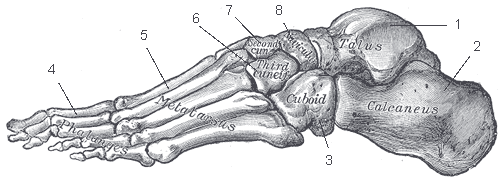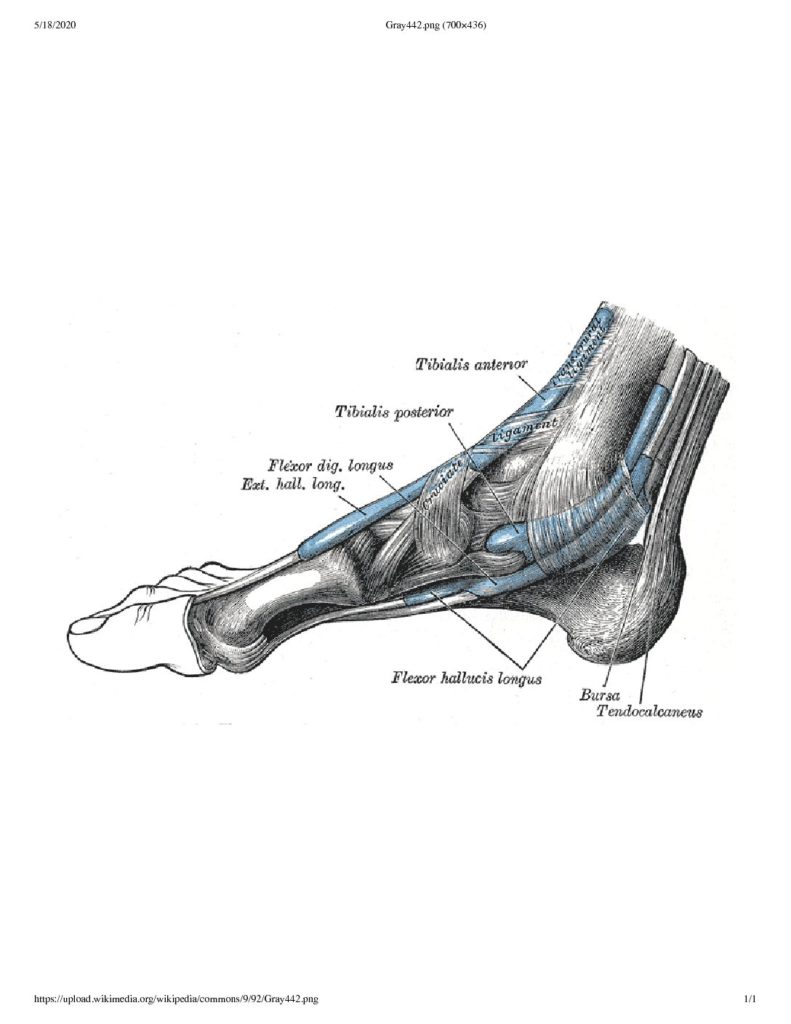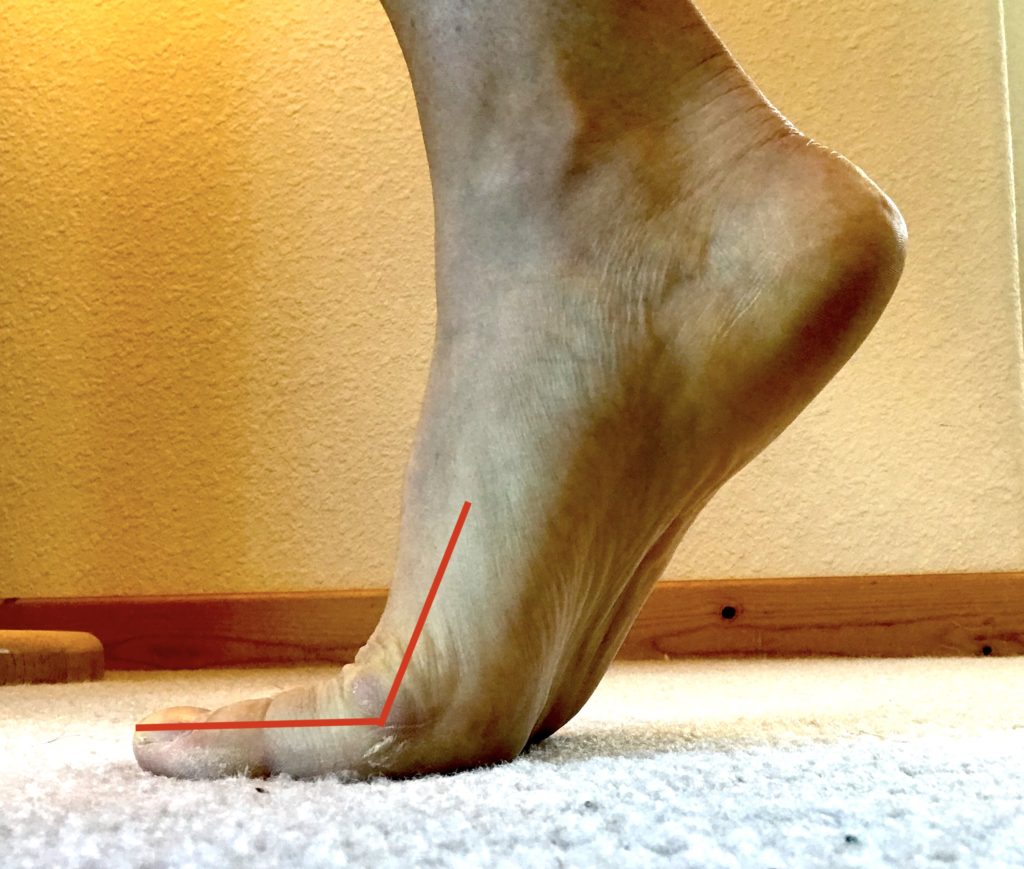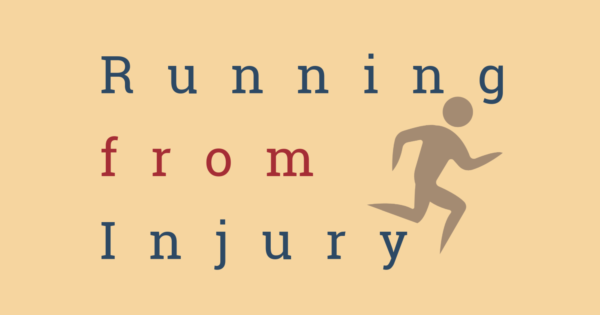
Today I want to talk about feet. Those ugly weird looking things underneath us that we try to cover with shoes. Many times, a runner’s feet can be more important than their shoes. I have treated many patient’s in the clinic for injuries such as shin splints, knee pain and sciatica and have traced the mechanical cause of their pain down to their feet. That is, I found some lack of strength, or mobility (or both) at the foot that was contributing to their pain happening elsewhere. Healthy feet can make for healthy runners.
Needless to say, that as a physical therapist, I find feet fascinating. Feet are made up of bones, ligaments, tendons, muscles and fascia. When running, feet work to both absorb shock when we hit the ground. They then must quickly become a rigid lever to help us push off of as we propel ourselves forward.
Feet also help us to keep our balance. When running, only one foot is making contact with the ground at a time. That means that running is a lot of balancing on one leg. If our feet were not able to spread out on the ground and accommodate to its surface, running would be much more difficult. Having strong and mobile feet can help to prevent numerous injuries including plantar fasciitis, shin splints, bunions, Achilles tendon problems, posterior tibialis tendon problems, patellofemoral problems, sciatica…The list goes on an on.
How do feet work when running?
There is a force associated with running. When your foot hits the ground, your body needs to deal with that force in such a way that you do not get injured. In other words, your body works as a shock absorber. So, what happens? Your hip and knee bend, your ankle dorsiflexes, and your foot pronates.
Before you go off on how your running injury is due to your foot pronation, let me tell you that your foot is SUPPOSED to pronate. That is, after your foot makes contact with the ground, that inner edge of your foot (the arch) flattens and gets closer to the ground. The arch does this to help deal with the force that you have put through it. Having feet that pronate is not a problem. Having feet that over pronate can be due to a lack of strength somewhere in your foot or leg (see here for exercises to help). Other times it is due to your bony structure, or how lax your ligaments are. If you fall into this latter category, exercises to help with strength and mobility can definitely help too. However, looking into shoes or inserts with a little extra support can also help.
While your foot is on the ground, your body passes over your foot. Your foot must then turn into a rigid lever to allow you to push off and propel yourself forward. For this to happen, your foot supinates. That is, that arch that lowered towards the floor, lifts up.
This is how your body stores and releases energy as you run. It is explained in greater detail here. I have also talked a little bit about it here, while trying to convince you that core strength is important.
This is a very top-level explanation of what happens at your foot during gait. If you want a more in depth look at foot mechanics while running and walking, you can find it here.
The nuts and bolts

From the area just below your malleoli (the ankle bump bones) to the tips of your toes there are 26 bones that make up the foot. Whether walking or running, many of those bones move in relation to each other. There are muscles that run along the top and bottom of your feet. They can help to stabilize the foot and allow for greater control of supination and pronation as well as with balance. Tendons are the structures that help to attach the muscles to bones. Ligaments help to hold the bones together. Think of them like masking tape that connects one bone the surrounding bones, thus adding strength and stability to the structure of your foot.
Then there is fascia. The most famous (or infamous) fascia of the foot being the plantar fascia. The plantar fascia is a band of connective tissue that runs from your calcaneus (heel bone) to the metatarsal heads (ball of your foot). The plantar fascia acts like a sling, it absorbs shock of you hitting the ground and then propels you forward. A better explanation of the plantar fascia and how it can cause runners problems can be found in a previous article.
The action
So when you are running and your foot makes contact with the ground, it must (in conjunction with other parts of your body) work to absorb shock. The ankle will flex and the foot will pronate in order for this to happen. As you move forward over your foot that is planted on the ground, you need a firm base of support. This firm base of support can help you to keep your balance so that you do not have to make any excessive movements at your ankle, knee or hip. Avoiding these excessive movements can help to prevent injuries in this area.
As you continue to move forward and your arch needs to supinate in order to be that rigid lever to help. That means that some of the muscles that help to flex your big toe and lift your arch need to kick in. These muscles include your flexor hallicus longus, and your tibialis posterior. When running, the last part of your foot to leave the ground is the big toe. That big toe needs to extend passively as your foot leave the ground. That means it needs to have enough mobility to move up, as though it were pointing to your knee. The big toe extending also helps to lift the arch slightly to make it more rigid, thus helping you to push off and propel yourself forward.
Pretty cool huh?
In fact, having strong and mobile feet can make your running more efficient and therefore faster. That is, the easier it is for your foot to absorb shock and propel you forward, the less energy you will have to use from elsewhere in your body while running. If you keep your feet healthy, you as a runner will stay healthy and less prone to injury.
Working up the chain
If your foot is deficient in the mobility and/or strength that it needs to help you run, you are going to have to make up for that deficit elsewhere. As you push off from the ground, you need to have a certain amount of extension at your big toe (70- 90 degrees for running). If the joint at your big toe is stiff and you may not have that amount of extension. As a result your body will compensate to make up for it. Your foot may do things such as collapse inward. This inward collapse is a possible cause of overpronation. Collapsing inward may also force muscles such as your posterior tibialis, or gastrocnemius to work overtime leading to tendon issues in those areas.

A foot that does not go into enough supination (i.e. an overpronator), before leaving the ground may lead to poor mechanics farther up the leg. Over time, these faulty mechanics can lead to ankle, knee or hip problems.
How to have healthy feet for healthy running
Doing some simple mobility and strengthening exercises for your feet can help to mitigate these problems. In fact, you may find that if you currently do not have any nagging injuries that doing these exercises regularly can help to improve your balance and your stride. Be patient with some of the strengthening exercises. They are wonderful to help build strength, and you might find that your foot can move in ways that you did not think possible. The mobility exercises can feel oh so good after a long run, or after spending lots of time on your feet. Remember, healthy feet make healthy runners!
Want to hear about the latest happenings from runningfrominjury.com? Also want to learn some exercises to help improve your foot mobility. Sign up below to receive a PDF of exercises, and I’ll make sure that you stay up to date on what happens here. You can also follow me on Instagram @tri_injury_prevention where I also show many of my exercises.
